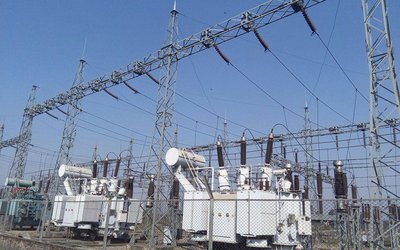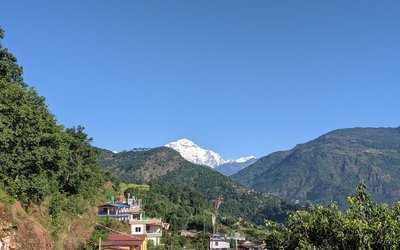The much feared and publicized earthquakes have started happening in Nepal. A 7.8 magnitude tremor shook the Kathmandu Valley and adjoining districts on April 25 causing immense damage to lives and property in the Valley and other districts such as Gorkha,Rasuwa, Sinhdupalchok. Kavrepalanchwok, Dolkha,Ramechhap, Dhading, Okhaldhunga, Kathamndu, Lalitpur and Bhaktapur.Numerous aftershocks thereafter, a strong one on the very next day, kept on shaking the people who were badly jolted one more time by the magnitude 7.4 earthquake on May 12.The tremor of May 12 and its numerous aftershocks have affected new areas and have again shaken and confused the people who were about to recover from the earlier shocks and return to normalcy thinking that the threat to lives and property was over.Unfortunately,the threat is continuing. More than 8622 have died and some16808 are injured. People have been rendered homeless and jobless with no choice but to depend on scanty relief provided by Nepal government, charitable organizations, generous individuals and friendly nations.Rs.8 billion worth of agricultural products and livestock worth more than a billion are said to have been destroyed.Buildings,belonging to both individuals and government, have been destroyed and badly damaged. Hospital and schoo lbuildings,temples and monuments of historical, cultural and archaeological importance such as Bhimsen Stambha,popularly known as Dharhara,has been reduced to rubbles and Hanumandhoka Durbar Square,Patan Durbar Square and Bhaktapur Durbar Square,Bouddhanath Stupa and Swyambhunath Stupa have been severely damaged in the quake. Many other sites of religious importance have also been damaged.Singha Durbar has sustained structural damage and two old palace-like buildings of Nepal Rastra Bank at Balubatar and Thapathali have been rendered useless. The total destruction/damage to buildings and landmarks is likely to exceed the initial estimate of Rs.1150 billion as the latest information reveals that 490692 houses belonging to individuals have been fully damaged and 266561 private houses stand partially damaged. Varying opinions on the magnitude of quakes of April 25 and May 12 are circulating and it has been difficult for commoners to ascertain whether the jolt of April 25 was an independent one or merely an aftershock of the first one. Earthquake- related agencies at home have differed with outside agencies on the magnitude and aftershock issues. Notwithstanding these differences, the indelible fact is that people leaving in the stretch of land between Gorkha and Dolakha districts have suffered unthinkable loss of lives and property forcing Nepal Government to seek international assistance to carry out rescue, relief and rehabilitation work.Assistance,mostly in kind, is pouring in and is likely to continue for some more time because agencies such as the United Nations and its partners have already appealed for 415 million dollar(Rs.42 billion) to provide vital relief to those affected, Japan has announced that it would organize a special meeting of the donors to help Nepal in such a difficult situation and Nepal Government is also contemplating a meeting of donors shortly. So far, cash assistance has merely trickled into the Prime Minister’s Relief Fund and UN is also concerned that only Rs. 6 billion has been deposited with it so far.Banki Moon in New York and R S Mahat in Kathmandu have expressed their concern over trickling resources into their respective funds. Without waiting for resources from outside, Nepal Government has been liberally releasing funds to carry out relief and rehabilitation work and our security forces (army and police) have carried out rescue operation in cooperation with forces from friendly country in a commendable way. Let us hope that there will be a smooth flow of resources soon, both from within the country and outside, to carry out relief and rehabilitation work and to push the long- ailing economy likely to require ventilator support (fiscal stimulus) post April 25 earthquake. In the changed context, those at the helm of affairs may wish to pay some attention to the following.
It is time that we reviewed our relationship with nature mainly with its constituents such as water, forest and free land that includes hills, mountains and cropped area. Agricultural land is fast disappearing both in urban and rural areas, making way for hazardous urbanization. Vast areas of fertile land in the Valley that grew crops and fresh vegetables have now on them concrete jungles. Open spaces in Kathmandu are so difficult to find that panicking people during the quakes had no choice but to assemble on the middle of roads to save their lives. Further, unnecessary digging of roads in rural areas has caused immense damage to forest and arable land. Bleeding hills and mountains amply manifest the deterioration taking place in our eco system. Let us also learn to make judicious use of water resources in our country facing acute scarcity of drinking water as well as power. We need nature but she does not need us, make no mistake. Mother earth has every right to shake in pain when too much injury is inflicted on her.
Property market is likely to take a hit because of unimaginable destruction of buildings and fear-struck people leaving the Valley in large numbers. Within property market, high-rise segment is certainly the worst sufferer because most of the apartment buildings have sustained damages of structural nature and their occupants have moved elsewhere. There was definitely a need to arrest the undesired rise in real estate prices but it would be unwise not to arrest it crash. This mishap has provided an opportunity for the concerned to formulate and strictly implement construction norms and guidelines. Dwellings on fragile hills and other risky areas should be pulled at one place so that risk is minimized and cost of providing water and electricity also decreases substantially. Construction of model villages in some areas, not definitely on landslide-prone hills, should start immediately, which could be replicated throughout Nepal, giving priority to quake-hit areas.
People with some shelter to put their head under in unaffected areas are rushing out of Valley and resourceful ones are flying out of Nepal. In such a situation, it would be unwise to expect foreigners to come to Nepal where everything is revolving around quakes and the devastation caused by them. With recurring major jolts and their countless aftershocks, it looks like we will have to learn to live with them as is the case in some countries. We have to give a clear message to the outside world that the nation and our economy have not come to a grinding halt and the country is safe and without any danger of epidemic. If this message is effectively put across, investors will come and tourists will flock into Nepal to be close to nature, which appeared little bit unkind to us only this time. Further, tourists would be tempted to get the fresh and firsthand knowledge of the devastation. It would be wise, therefore, to keep some portion of the destroyed monuments, after clearing the debris. It can be said that tourism that has suffered some set back will not take long to get back to prior-quake situation. Some major investment decisions will have to be taken and additional concessional packages will have to be offered to get investors.
Inflation (7 percent) has moderated in Nepal in keeping with global situation but scarcity of essentials after the jolts is likely to push it up. Administrative actions along with proper supply management could arrest undesired rise in prices of essentials as well as construction materials thereby containing inflation within manageable limits. Nepal Rastra Bank (NRB) has advised that construction loan be given to affected households at 2 percent interest by commercial banks that will receive cost free refinance from the central bank.NRB has the advantage of adopting accommodative monetary policy because beside moderate inflation, balance of payment position is also positive by Rs.35 billion. This liberal attitude could be extended to cover other areas such as agriculture and industry so that the enhanced domestic demand for food and construction materials could to some extent is met internally without relying too much on imports as has been the case so far. It may be noted that Nepal expends about Rs.12 billion annually on import of rice from India and import of agricultural products from our neighbor on the south has increased by 5 folds in the last 5 years.Further,public debt/ gdp ratio(below 30 percent),government reserves with NRB(92 billion),low capital expenditure(33 billion so far out of allocated 116 billion) and provision in the budget to raise internal loans(52.75billion) and money that can be borrowed from NRB as overdraft(25 billion) adequately show that Nepal Government has the fiscal space to go for fiscal stimulus at a time when the economy has to be kick started and the gigantic task of reconstruction and rehabilitation, said to require Rs.200 billion, has to start without much delay.
As said, efforts will have to be made not to rely entirely on imports to meet the enhanced domestic demand. Production of cereals such as rice can be increased meaningfully in a relatively short period of time and so could be the case with construction materials required to set up temporary dwellings before the onset of monsoon.NRB could work in tandem with Ministry of Finance (MOF) to make factor inputs available at minimal cost. Current budget has made provisions to support tourism, hydropower and agriculture but the progress achieved so far does not look encouraging. Additional efforts are needed in the power sector to increase generation of hydro power to meet not only external demand but internal use of power, which should eventually be used in different modes of transport and in our households for cooking and heating purposes. If LPG cylinders in Nepalese kitchens could be replaced by water- based electricity, it could save at least Rs. 132.97 billion that Nepal spent on import of LPG last year.
Since different sectors of the economy have taken a hit, gdp is likely to drop to around 4 percent from the estimated 5 percent level but a sharp drop or shrinkage in the economy is not apprehended because it is hoped that the derailed economic activities will be put back on track without wasting much time. Lawmakers discussed the devastation caused by the quakes in the legislature wing of CA and urged the government to effectively carry out rescue, relief and rehabilitation work. Listening to the deliberations in the House, which met just to discuss earthquake-related issues, and the resolution passed, it looks like the disaster has united the whole nation. Hope the much talked about national unity government and issues related to its leadership and division of power do not shake and crack the new-found unity amongst leaders the way earthquakes shook our high-rises that are standing at different points in the Valley displaying fearful cracks on them. Hope the unity shown in passing the resolution is extended to cover constitution writing and building of the economy.

Dr. Tilak Rawal
Dr. Rawal is former governor of NRB.
- Prachanda Outsmarts Again
- Apr 14, 2024
- Prachanda Completes One Year
- Jan 26, 2024
- Terrible Times To Continue
- Oct 12, 2023
- Budgets Of Nepal
- Jun 09, 2023
- Moves And Counter Moves
- Feb 27, 2023















